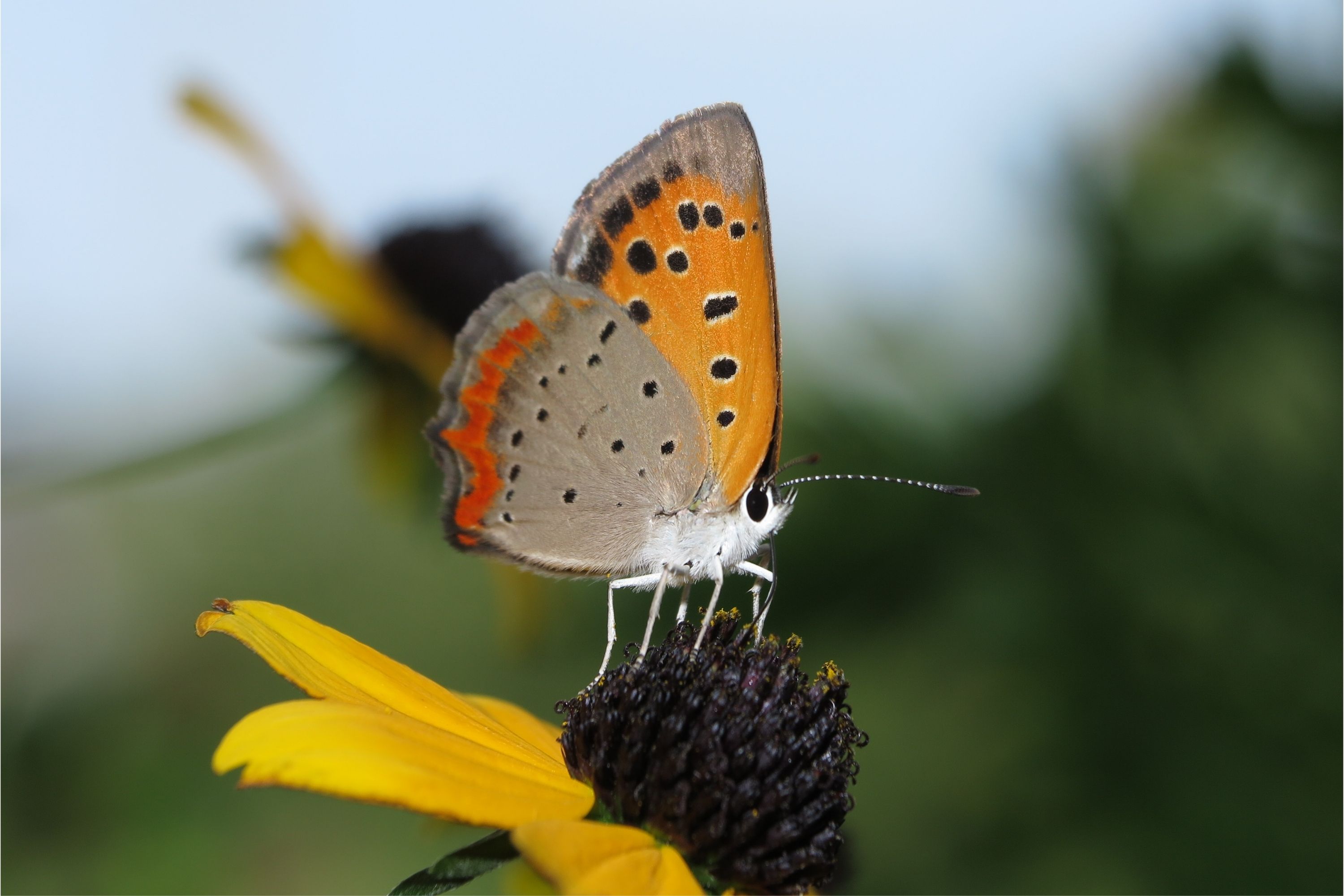Small copper
(Lycaena phlaeas)

Description
Lycaena phlaeas, the small copper, American copper, or common copper, is a butterfly of the Lycaenids or gossamer-winged butterfly family. According to Guppy and Shepard (2001), its specific name phlaeas is said to be derived either from the Greek phlego, "to burn up" or from the Latin floreo, "to flourish". The upperside forewings are a bright orange with a dark outside edge border and with eight or nine black spots. The hindwings are dark with an orange border. Some females also have a row of blue spots inside the orange border and are known as form caeruleopunctata. The undersides are patterned in a similar way but are paler. The black spots on the forewings are outlined in yellow and the dark colouring is replaced by a pale brownish grey. The hindwings are the same brown/grey colour with small black dots and a narrow orange border. The caterpillars (larvae) are usually green, but some have a purple stripe down the middle of the back and along each side. It is a Holarctic species, widespread and common across Europe, Asia, North America, and also found in North Africa south through to Ethiopia. It can be found almost anywhere in south/central England and Wales although never, it seems, in large numbers. Its distribution becomes more patchy in northern England, Scotland and Ireland. In bright sun it is a very active little butterfly with the males setting up small territories which they will defend vigorously against rival males or indeed any unlucky passing insect. Even the shadow of a large bird passing overhead is enough to elicit a response. Females are pursued and mating usually occurs in vegetation.
Taxonomic tree:







